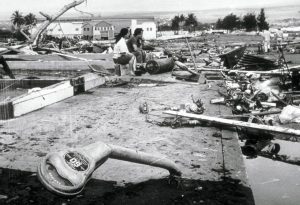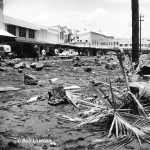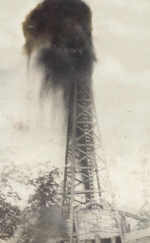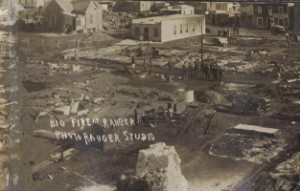businesses
 These days, scientist and inventors have collaborated to develop early warning systems for just about any possible disaster, and when everything works as it should, and people heed the warnings, loss of life can often be avoided. Having the technology is great, but technology can’t make human beings do the right things…unfortunately. On May 22, 1960, twelve years after tsunami warnings were developed, and with the warning system in good working order, a massive 9.5 earthquake struck off the coast of Chili. It was the largest earthquake ever recorded. Unfortunately, we don’t really have an earthquake warning, and so without warning, 1655 people lost their lives in Chili and 3,000 injured in the quake. Two million people were made homeless, and damage was estimated at $550 million. The earthquake, involving a severe plate shift, caused a large displacement of water off the coast of southern Chile at 3:11pm. Traveling at speeds in excess of 400 miles per hour, the tsunami moved west and north. On the west coast of the United States, the waves caused an estimated $1 million in damages, but were not deadly. Everyone assumed that the worst was over.
These days, scientist and inventors have collaborated to develop early warning systems for just about any possible disaster, and when everything works as it should, and people heed the warnings, loss of life can often be avoided. Having the technology is great, but technology can’t make human beings do the right things…unfortunately. On May 22, 1960, twelve years after tsunami warnings were developed, and with the warning system in good working order, a massive 9.5 earthquake struck off the coast of Chili. It was the largest earthquake ever recorded. Unfortunately, we don’t really have an earthquake warning, and so without warning, 1655 people lost their lives in Chili and 3,000 injured in the quake. Two million people were made homeless, and damage was estimated at $550 million. The earthquake, involving a severe plate shift, caused a large displacement of water off the coast of southern Chile at 3:11pm. Traveling at speeds in excess of 400 miles per hour, the tsunami moved west and north. On the west coast of the United States, the waves caused an estimated $1 million in damages, but were not deadly. Everyone assumed that the worst was over. 
Nevertheless, warnings were sent to the Hawaiian islands. The Pacific Tsunami Warning System properly and warnings were issued to Hawaiians six hours before the wave’s expected arrival. The response of some people, however, was reckless and irresponsible. Some people ignored the warnings, and others actually headed to the coast in order to view the wave. Arriving 15 hours after the quake, only a minute after predicted, the tsunami destroyed Hilo Bay, on the island of Hawaii. Thirty five foot waves bent parking meters to the ground and wiped away most buildings, destroying or damaging more than 500 homes and businesses. A 10 ton tractor was swept out to sea. Reports indicate that the 20 ton boulders making up the sea wall were moved 500 feet. Sixty-one people died in Hilo, the worst-hit area of the island chain. Damage was estimated at $75 million. This tsunami caused little damage elsewhere in the islands, where wave heights were in the 3-17 foot range. The tsunami continued to race further west across the Pacific. Ten thousand miles away from the earthquake’s epicenter. Japan, received warning, but wasn’t able to warn the people in harm’s way. At about 6pm, more than a day after the quake, the tsunami hit the Japanese islands of Honshu and Hokkaido. The  crushing wave killed 180 people, left 50,000 more homeless and caused $400 million in damages. The Philippines, also hit, saw 32 people dead or missing.
crushing wave killed 180 people, left 50,000 more homeless and caused $400 million in damages. The Philippines, also hit, saw 32 people dead or missing.
Tsunami warnings definitely save lives, but only if people will heed the warnings. As long as people decide that the warning doesn’t apply to them, and give in to their curiosity to go have a look, there will continue to be deaths. It seems a great shame that inventors and scientist work so hard to make a warning to save lives, and then some people refuse to do what is necessary to be safe after they have been warned. I simply don’t understand how people can ignore these warnings and take a chance with their lives.
 Ranger, Texas had been an agricultural center, becoming a wheat producing center for the north, until a drought in 1917 hit the town crops very hard. That was when a few residents encouraged William Knox Gordon (who could be relation to Bob’s family, but I have not confirmed it) who was vice president of the Texas Pacific Coal and Oil Company, to test for oil in the area. He found oil, but the first well drilled, the Nannie Walker No. 1, was somewhat of a disappointment, as it first produced gas and only later blew in oil. Then, in October 1917 the McClesky No. 1 came in, reached a daily production of 1,700 barrels, and began a mammoth oil boom
Ranger, Texas had been an agricultural center, becoming a wheat producing center for the north, until a drought in 1917 hit the town crops very hard. That was when a few residents encouraged William Knox Gordon (who could be relation to Bob’s family, but I have not confirmed it) who was vice president of the Texas Pacific Coal and Oil Company, to test for oil in the area. He found oil, but the first well drilled, the Nannie Walker No. 1, was somewhat of a disappointment, as it first produced gas and only later blew in oil. Then, in October 1917 the McClesky No. 1 came in, reached a daily production of 1,700 barrels, and began a mammoth oil boom that drastically changed Ranger and Eastland County.
that drastically changed Ranger and Eastland County.
In the summer of 1918, my grandparents sold their homestead in Minnesota and headed south, finally settling in the town of Ranger, Texas. Like so many people, the oil boom in Ranger had drawn them in search of better times, and oil meant better times. There were many oil wells near and even in the town of Ranger during those years, and that meant that the residents could never escape the smell of oil. That is something we here in Wyoming can understand…or at least any of us who have been through the town of Midwest. You know you are getting close to Midwest, because your proximity is announced by the pungent smell of oil. I suppose if you are an oil tycoon, that might just smell like money, but to me…it smells awful.
During those years, there was a danger that the people of Ranger lived with every day. With so much drilling going on, so close and within the town and with the drought continuing, the possibility of out of control fires when an oil well came in and caught fire was a daily concern. There were several such fires, including the one on April 6, 1919, which took out 2 city blocks in the town. It is hard for me to think about how my grandmother must have felt with those fires being a daily possibility…especially after the one that happened on April 6th.  My Aunt Laura was just a little girl of 6 years when the April 6th fire hit the town. The worry of trying to get your little girl out of harms way, must have weighed heavy on my grandparents’ minds. She could be outside playing with friends, or sleeping, or any number of other reasons that could make a quick escape difficult. Nevertheless, the little family survived that constant threat of fires and after getting their fill of the Texas oil fields, returned to Wisconsin, at some point before my Uncle Bill was born in 1922, where they would remain for the rest of their lives.
My Aunt Laura was just a little girl of 6 years when the April 6th fire hit the town. The worry of trying to get your little girl out of harms way, must have weighed heavy on my grandparents’ minds. She could be outside playing with friends, or sleeping, or any number of other reasons that could make a quick escape difficult. Nevertheless, the little family survived that constant threat of fires and after getting their fill of the Texas oil fields, returned to Wisconsin, at some point before my Uncle Bill was born in 1922, where they would remain for the rest of their lives.
 If you were a teenager in the 1970’s, in Casper, Wyoming, you know about dragging the strip, because that was what the kids did back then. The local businesses didn’t appreciate it much when we stopped to talk in their parking lots either, although to this day I don’t know what harm there was in it. Nevertheless, if you sat in their parking lot very long, the police would show up and make you leave, and if you were caught there very much, they could even give you a ticket for loitering, although I never heard of anyone who got one.
If you were a teenager in the 1970’s, in Casper, Wyoming, you know about dragging the strip, because that was what the kids did back then. The local businesses didn’t appreciate it much when we stopped to talk in their parking lots either, although to this day I don’t know what harm there was in it. Nevertheless, if you sat in their parking lot very long, the police would show up and make you leave, and if you were caught there very much, they could even give you a ticket for loitering, although I never heard of anyone who got one.
Dragging the strip gave the local teens the chance to show off their cars and hang out with their friends. Our friend, Lana had a yellow Mach I Mustang. She took that thing to the car wash after work…every day, and then she headed out to the strip to hang with her friends. That always struck me as funny, because I just couldn’t see how her car could have been that dirty. I asked her about it once, and she said she just couldn’t take a dirty car out on the strip, and she lived on a dirt road, so it got dusty every time she went home. It made sense, I guess, but it was still funny. The things that bug us as kids…right.
The strip went from Red Barn, now Peaches, on 2nd Street to Smith’s on CY Avenue, and if you rode it very long, you would see just about every beater and hot rod imaginable. Bob drove a 1974 AMC Hornet, which would not be considered a sport car, except that it was gold, with racing stripes, mag wheels, and it was jacked up in the rear end, plus it was a V-8, and that gave it plenty of power, because it was a small car. My car was a 1968 Plymouth Fury III…not a sporty car, because my dad told me that I should get a car that could go from being my first car to being a family car later. It was a good idea, and it did do that, but I really wanted the pink Plymouth Duster that I tried to sell him on, or even the old panel van that I thought looked funky. Our friend Leroy drove an orange Road Runner, and another friend Kurt, drove a blue fastback Mustang. Some of the cars were beaters, as I said…just something to get by on, but not much for looks. It didn’t seem to matter as kids, because the main thing was to have the freedom to hang out and drag the strip, peeling out of A & W and wearing out our tires, and wasting gas…which I’m sure more than one of us wish we had back these days.

